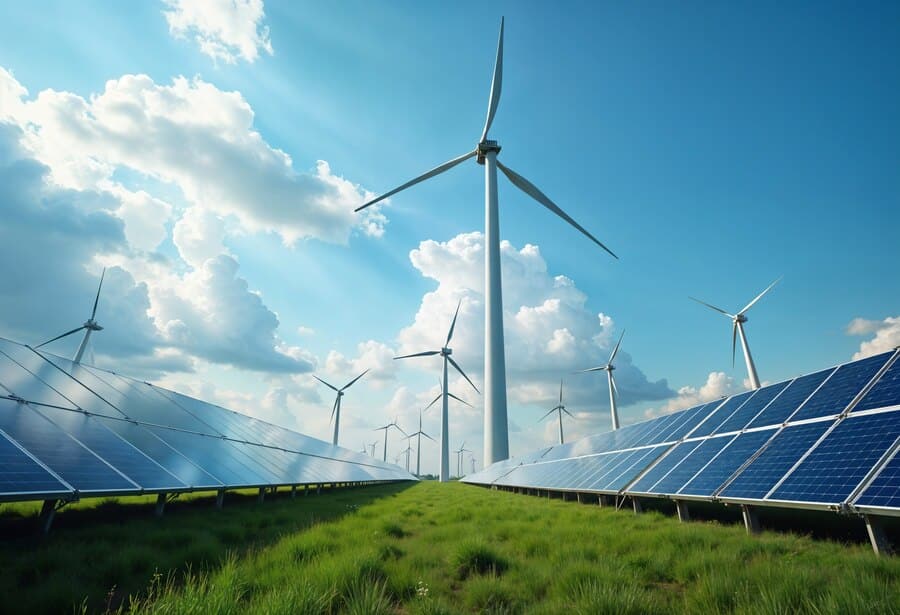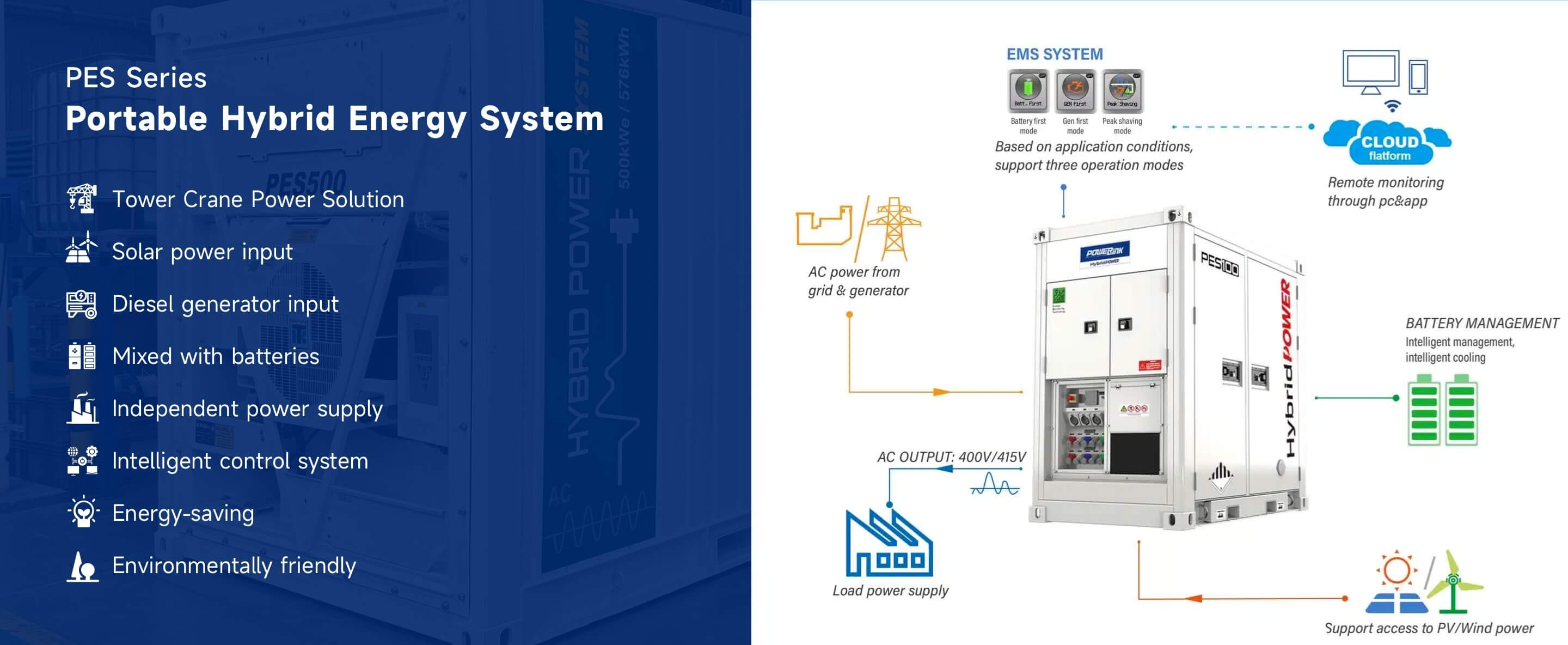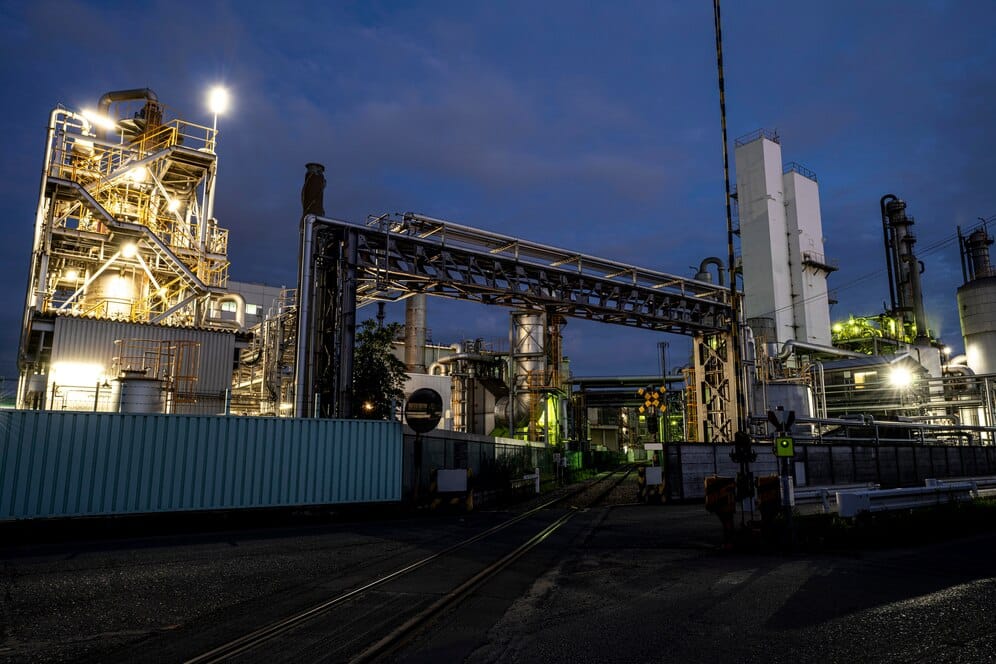Hybrid Energy Systems: The Future of Sustainable Power
Faced with growing concerns about climate change and depletion of natural resources, the world continues to seek sustainable solutions to meet its growing energy needs. Hybrid energy systems are one such solution, combining multiple energy sources to optimize efficiency, reduce environmental impact, and increase reliability.
What is a Hybrid Energy System?
A hybrid energy system refers to a power generation system that uses two or more energy sources to produce electricity. These sources can include renewable energy options such as solar, wind, and hydro, along with non-renewable sources like diesel, natural gas, or even battery storage. The combination of multiple energy sources provides a more reliable, cost-effective, and environmentally friendly power supply than relying on a single energy source.
The primary goal of a hybrid energy system is to combine the strengths of different energy sources while minimizing their weaknesses. For example, solar energy may be highly efficient in sunny areas, but its output fluctuates with weather conditions. Wind power, on the other hand, can be highly variable depending on wind conditions. By integrating these systems with battery storage or other backup power sources like diesel generators, a hybrid energy system can maintain a consistent and reliable power supply.
Key Components of Hybrid Energy Systems
The key components of a hybrid energy system vary depending on the specific configuration, but some of the most common elements include:
Energy Sources: The core of any hybrid energy system is the combination of energy sources. This could be a mix of renewable sources like solar panels, wind turbines, or hydropower, or it could include conventional energy sources like diesel generators or natural gas turbines.
Energy Storage: Storage systems such as batteries are critical for hybrid energy systems. They store excess energy generated during periods of high production (e.g., a sunny day or a windy day) and release it when the primary energy sources are not generating enough power (e.g., during nighttime or calm weather). Common energy storage solutions include lithium-ion batteries, flywheels, and pumped hydro storage.
Inverters: Inverters are used to convert the direct current (DC) electricity generated by sources like solar panels and batteries into alternating current (AC) electricity, which is the standard form of power used in most homes and industries.
Control Systems: Control systems play a critical role in managing the integration and coordination of different energy sources and storage. These systems ensure that the most efficient energy sources are used at the right time and that any excess power is stored for later use or fed into the grid.
Grid Connection (Optional): Many hybrid energy systems are connected to the electrical grid, allowing them to both import and export electricity. This connection ensures that power can be drawn from the grid when needed or sent back to the grid when there is excess power generation.
How Do Hybrid Energy Systems Work?
Hybrid energy systems work by integrating multiple energy sources in a way that maximizes efficiency and reliability. The system is designed to balance the energy generation, storage, and consumption by leveraging the complementary characteristics of different energy sources.
For example, during the day when the sun is shining, solar panels generate electricity, and if there is excess energy, it can be stored in batteries. In the evening or when there is a lack of sunlight, the system can rely on wind power, grid power, or backup generators to meet the demand. The energy storage component ensures that power is available even when the renewable energy sources are not producing enough electricity.
In some cases, the system may also include smart grids or microgrids that enable dynamic communication between the power generation and consumption points. These smart grids can make real-time decisions about when to pull from the grid, when to store energy, or when to rely on a backup generator based on factors like energy demand, weather forecasts, and the state of the system.
Benefits of Hybrid Energy Systems
Increased Reliability and Stability: By combining multiple energy sources, hybrid energy systems reduce the risk of power outages due to fluctuations in any single energy source. For example, solar energy can be intermittent, but when paired with wind or battery storage, the system can remain stable and provide a constant energy supply.
Reduced Environmental Impact: Hybrid energy systems can significantly reduce greenhouse gas emissions by relying on renewable energy sources like solar and wind. This can contribute to global efforts to combat climate change and reduce the reliance on fossil fuels.
Cost-Effective: Over time, hybrid energy systems can reduce operational costs. By utilizing renewable energy when available, they decrease the need for expensive fossil fuels and reduce energy consumption from the grid, lowering electricity bills. Additionally, hybrid systems can be optimized to run on low-cost or renewable sources during off-peak hours.
Scalability: Hybrid energy systems can be scaled to meet varying levels of energy demand. Whether in a small off-grid rural area or a large industrial setup, hybrid systems can be customized to provide the necessary energy output while remaining efficient and cost-effective.
Where Are Hybrid Energy Systems Used?
Hybrid energy systems are used in a wide range of applications across various sectors. Some common uses include:
Remote and Off-Grid Areas
In remote locations that are not connected to a centralized power grid, hybrid energy systems provide a reliable and sustainable source of power. These systems combine solar, wind, and storage technologies to provide uninterrupted power to homes, communities, and businesses.
Electric Vehicles (EVs)
Hybrid energy systems are increasingly being used in electric vehicles. These vehicles use a combination of electricity from batteries and fuel from traditional sources like gasoline or diesel to achieve higher fuel efficiency and extend the driving range.
Commercial and Industrial Applications
Businesses and industries are adopting hybrid systems to reduce energy costs and ensure uninterrupted power supply. By integrating renewable sources with conventional backup power, companies can operate more efficiently while reducing their carbon footprint.
Microgrids
Hybrid energy systems are often used in microgrids, which are small-scale, localized grids capable of operating independently from the main electrical grid. These systems can support communities, military installations, or critical infrastructure like hospitals.
The Future of Hybrid Energy Systems
As renewable energy technologies continue to evolve, hybrid energy systems will become increasingly sophisticated and widespread. The future of hybrid energy systems is promising, with advancements in energy storage, grid management, and artificial intelligence driving their efficiency and reliability.
With growing global demand for clean energy, governments and businesses are investing heavily in hybrid energy solutions. Policies and incentives that support renewable energy integration, along with technological innovations, will accelerate the transition to hybrid energy systems.
Learn More About Hybrid Energy Solutions From PowerLink
Hybrid energy systems are transforming the way we generate, store, and consume electricity, offering a sustainable and reliable alternative to traditional power generation methods. To explore hybrid energy solutions for your specific needs, learn more from PowerLink, a leading provider of innovative energy solutions. Whether you’re looking to reduce your carbon footprint, lower energy costs, or improve the reliability of your power supply, PowerLink can help you find the perfect hybrid system for your needs.
Embrace the future of sustainable power with hybrid energy systems—clean, reliable, and efficient energy for tomorrow.


